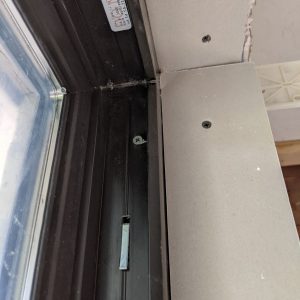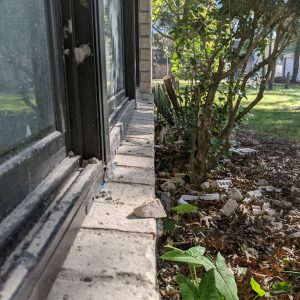Long story short, I am living a remodel from hell. The GC is being fired, and I have taken on the role of the GC. I will also be working on the house to recoup some costs
I am pretty much a DIY guy at heart. Mechanical engineer for a living, 28 years old, and a hell of alot of tenacity.
I am wanting to make this a super thread if you will. Instead of bombing the forum’s. Almost like a build thread for a car but for my house. I have alot of questions on what the best way to do things are
I’m pretty much going to be the finisher. I have insulation, drywall, cabinets, and countertops subbed out.
House is in The Woodlands, Texas. Please excuse any of my bad terminology or poor ways of describing what the heck I’m actually trying to do. Also, I like to overthink things alot only because I hate having to go back and do things twice.
Areas I’m covering myself:
Exterior:
1. Painting the gables and soffit, new and existing.
2. Setting exterior french doors
4. Need to fill nailheads on James Hardie soffit (I know the bottom of nail head should be flush with the surface, idiots over drove some of them.)
Interior:
1. Painting interior
My first question, many to come later.
#1 – I’m going to be receiving my prehung french doors soon. These doors will be set at the front and back of the house, and each area is walking out to a covered porch. These porches are at a lower elevation than where the door will be sitting.
The threshold of the doors will sit on concrete. What is the recommended type of caulk for sealing the bottom side of the threshold?
ANSWER- LEXEL adhesive, flashing tape, and sill pan in the way.
#2 – Previous GC had black drip edge installed. Wife wants white soffit and fascia board. I’m gunna need to put primer over the drip edge to be painted white. Will the Killz Primer be sufficient? Painting exterior soffit is going to be a chore, have is 20 years old (need to clean, and remove caulk, then reapply caulk.) The new soffit has a few sunken nail heads that need to be filled. Then I gotta caulk all the seams. I have a Graco Spraying machine ready for action.
#3 – I have been caulking windows all the windows. My last one I just noticed, which is hands down the worst one I have seen. All others look do not look like this. I attached pictures, this window had the typical nail fin flange. Whoever did this had no idea what they were doing, they even screwed it from the inside (only screw). Is my only way to fix this is to cut the brick out to see if the flashing was done right? Not to mention I will need to make the rough opening marginally wider to get the windows in line. We just put brick on the house, so I have to pull this area down , we have enough brick, and the bricker is planning to come back anyways to put brick around the doors after they are installed























Replies
In advance of the doors arriving, find the install instructions online and study those. You should see how the install incorporates a sill pan and your housewrap . Start there.
The same should have been done with the window installs.
Make sure you install a sill pan. Many folks skip that step but you dont want your door frame sitting on concrete.
Also make sure the end grain of the door jambs is well sealed. Many frames leave the factory with bare wood that will have a fun time wicking moisture up the end grain for the rest of eternity.
*Face Palm, found the manufactures specs. It specifies that the exterior doors must be installed under a overhang, which they will be. And it states to "apply a generous amount of caulk to floor where threshold will rest.
No mention of sill pan.
Engineers often get a bad rap because of their sometimes extreme overthinking and occasional intense attention to detail.
The above from a retired carpenter for a pt of reference.
However, detailing window and door installation is a good place to get intense. I saw no manufacturer listed in the install directions but most quality operations give more detail on sill pans and flashing.
Here’s just a sampling of pan info you can find using the “search” feature here.
https://www.finehomebuilding.com/?s=Door+sill+pan
Best of luck!
Edit: All caulk is not the same. If and when you use caulk in your install, I prefer something that has good bond and remains flexible till well after the tail lights dim on the horizon. Lexel makes an excellent product and for range of colors, most Urethane caulks seal, move and last a long time.
Stay away from silicone and “painters” caulk.
Make sure you have a friend around to help you install the French doors, they weigh a freaking ton.
More than one friend, it makes it so much easier
Ditto on installing a sill pan. My guess is the manufacturer hasn't updated their instructions in a while. It's common practice now. As for caulk, we use OSI Quad and Quad Max, it's the best.
I ordered two 75' rolls of 6" fashing from Grace, and got 2 tubes of Lexel. I am going to check the rough openings this weekend and adjust for plumb, level, and square. Then the following week ill do the flashing tape then put the doors in.
You don't want caulk. You want sealant, preferably one that's SMPU or SMPE. And as a former editor, I used to joke that I'd be out of a job if the magazine's subscribers simply read the instructions for the materials they were using.
Andy,
The reason you know the difference between caulk and sealant is that you took the editor job. Prior to that unless you went to engineer school or studied way more and harder than us low grade carpenters who only met you editors as well as our motley crew of reader friends via said magazine……
Lost track of what I was trying to say.
The Lexel he said he ordered *is* a sealant.
Killz All Surface primer should be fine for the drip edge on the soffit, but you should finish the job with paint. You might want to report the contractor who screwed u the job to begin with. Not sure what state you're in but there are independent sites like badcontractor.com and angi.com where you can let the general public know about them.
Thank you for the response on #2! Yes, I will be painting over it after I put down primer.
I will in due time most definitely.